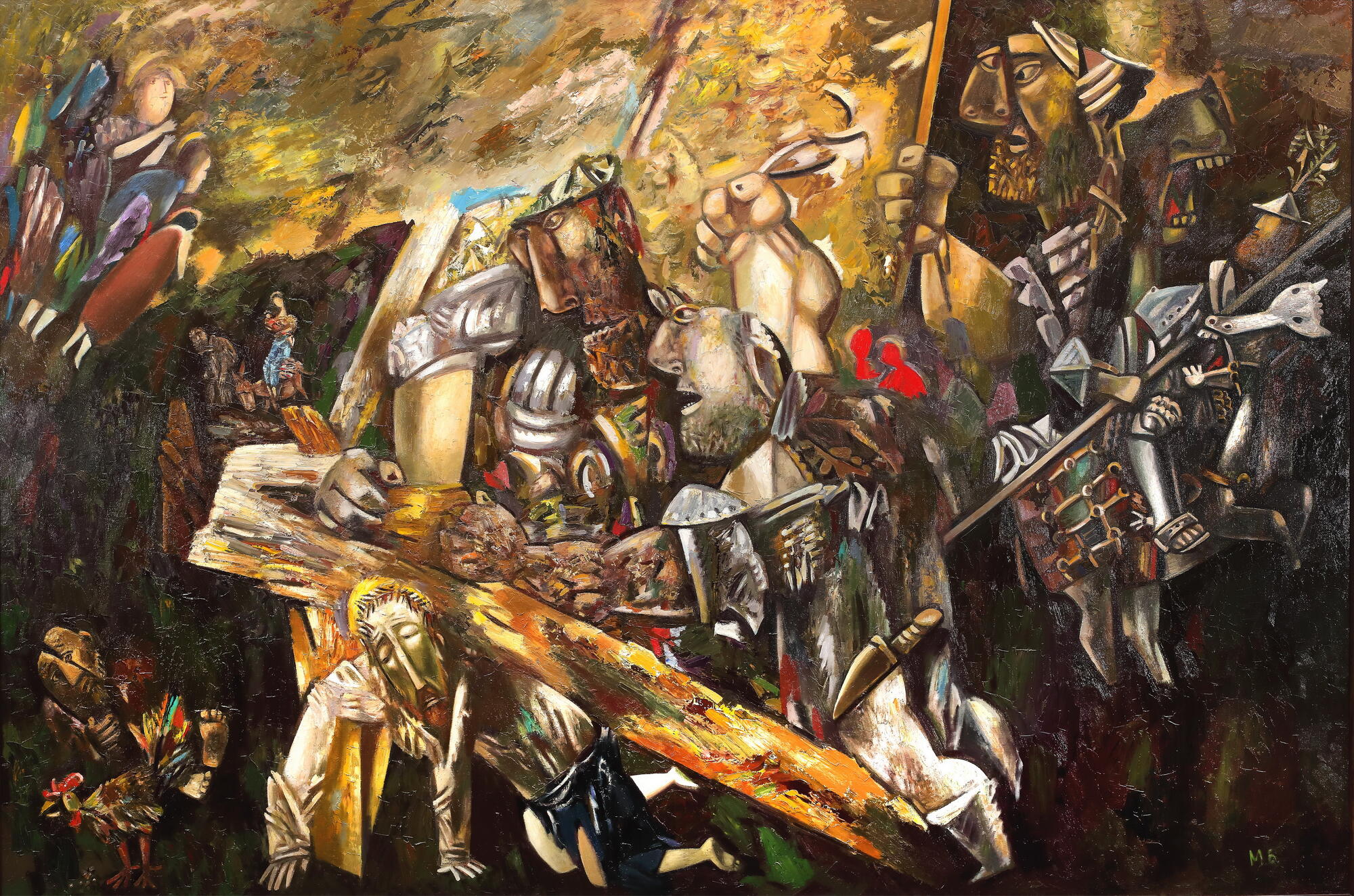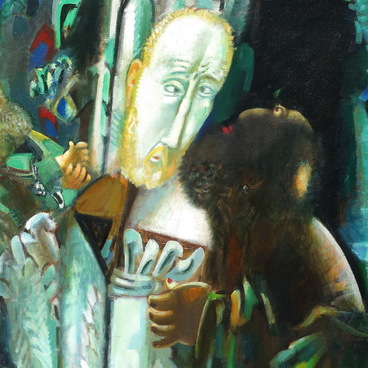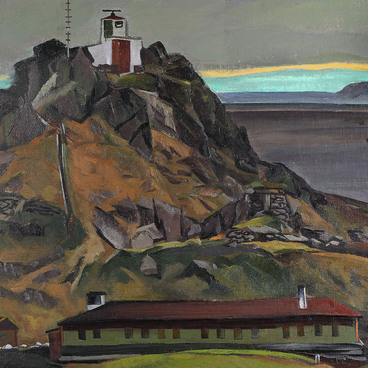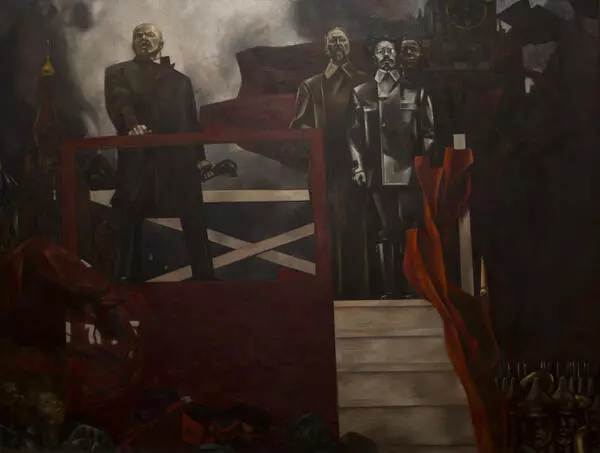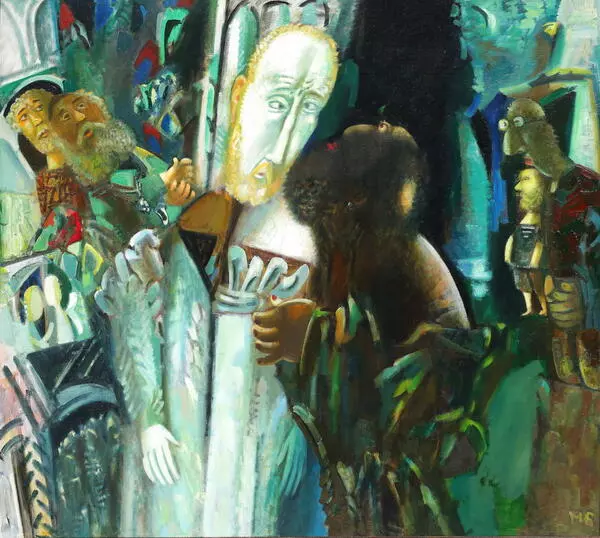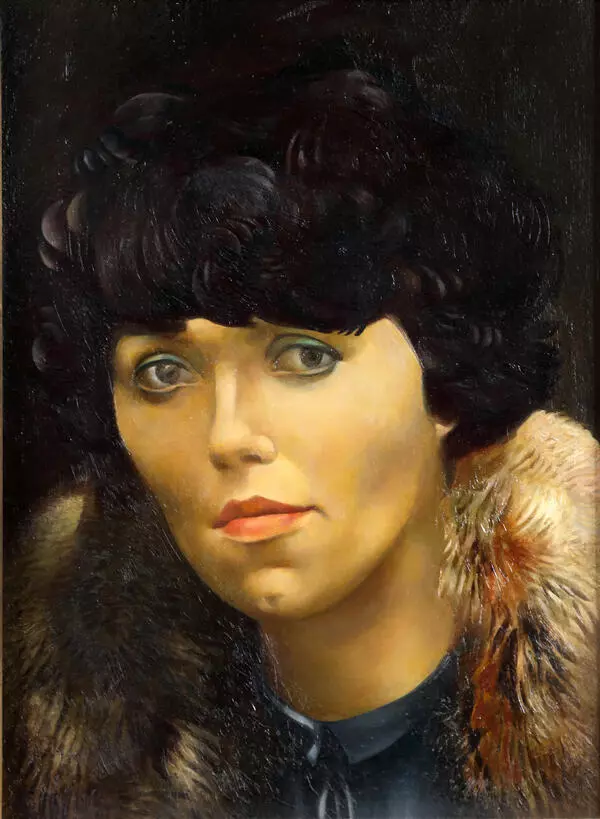A significant part of the Ural artist Misha Brusilovsky’s oeuvre is represented by biblical scenes. They are all part of a large painting cycle, including the painting “Carrying the Cross” created in 2012. This picture with multiple figures is dedicated to a scene from the New Testament — a well-known gospel episode describing the sufferings of Christ, his last earthly path carrying the cross to Golgotha, the site of the Crucifixion.
The story behind this painting is closely connected with the Irbit State Museum of Fine Arts. Brusilovsky made a rather bold reinterpretation of the composition and color of an earlier painting of the same name, painted in 1991 exclusively for the museum and within its walls. A stretcher for this work was assembled right there, the canvas was stretched on it and covered with a primer made according to the artist’s formula. And there again, in the summer of 2012, Misha Brusilovsky created a new variation of his painting “Carrying the Cross” and donated it to the museum.
Art critics note the unique painting style in this and many other paintings by Misha Brusilovsky, a virtuoso draftsman with an academic background. He chose bold and provocative distortion of shapes and proportions, as well as expressive colors, to enhance the emotional effect of his imagery.
The multifigured dynamic composition is filled with recognizable symbols referring to certain tragic events in the life of Christ. The pictorial space reveals images that for many years excited the artist’s spirituality and were earlier depicted by him numerous times in separate compositions.
The small scene “Escape to Egypt” shows the beginning of the difficult earthly path of Christ that leads him to the final tragedy, to which the painting is dedicated. In the scene “Peter and the Rooster”, the artist embodies the universal idea of repentance in the image of Peter, laden with his own grave sin of renunciation.
In this work, Misha Brusilovsky yet again intertwined the earthly and the heavenly. The artist contrasts the grotesque sinister images of Roman executioner soldiers carrying instruments of torture with the mournful, submissive, suffering, and yet spiritually powerful image of Christ, embodying sacrifice as the quintessence and apotheosis of life. The painting also serves as a reminder of the past given by the modern artist to all those living on earth: everyone has their own Golgotha and their own Cross.
The story behind this painting is closely connected with the Irbit State Museum of Fine Arts. Brusilovsky made a rather bold reinterpretation of the composition and color of an earlier painting of the same name, painted in 1991 exclusively for the museum and within its walls. A stretcher for this work was assembled right there, the canvas was stretched on it and covered with a primer made according to the artist’s formula. And there again, in the summer of 2012, Misha Brusilovsky created a new variation of his painting “Carrying the Cross” and donated it to the museum.
Art critics note the unique painting style in this and many other paintings by Misha Brusilovsky, a virtuoso draftsman with an academic background. He chose bold and provocative distortion of shapes and proportions, as well as expressive colors, to enhance the emotional effect of his imagery.
The multifigured dynamic composition is filled with recognizable symbols referring to certain tragic events in the life of Christ. The pictorial space reveals images that for many years excited the artist’s spirituality and were earlier depicted by him numerous times in separate compositions.
The small scene “Escape to Egypt” shows the beginning of the difficult earthly path of Christ that leads him to the final tragedy, to which the painting is dedicated. In the scene “Peter and the Rooster”, the artist embodies the universal idea of repentance in the image of Peter, laden with his own grave sin of renunciation.
In this work, Misha Brusilovsky yet again intertwined the earthly and the heavenly. The artist contrasts the grotesque sinister images of Roman executioner soldiers carrying instruments of torture with the mournful, submissive, suffering, and yet spiritually powerful image of Christ, embodying sacrifice as the quintessence and apotheosis of life. The painting also serves as a reminder of the past given by the modern artist to all those living on earth: everyone has their own Golgotha and their own Cross.
